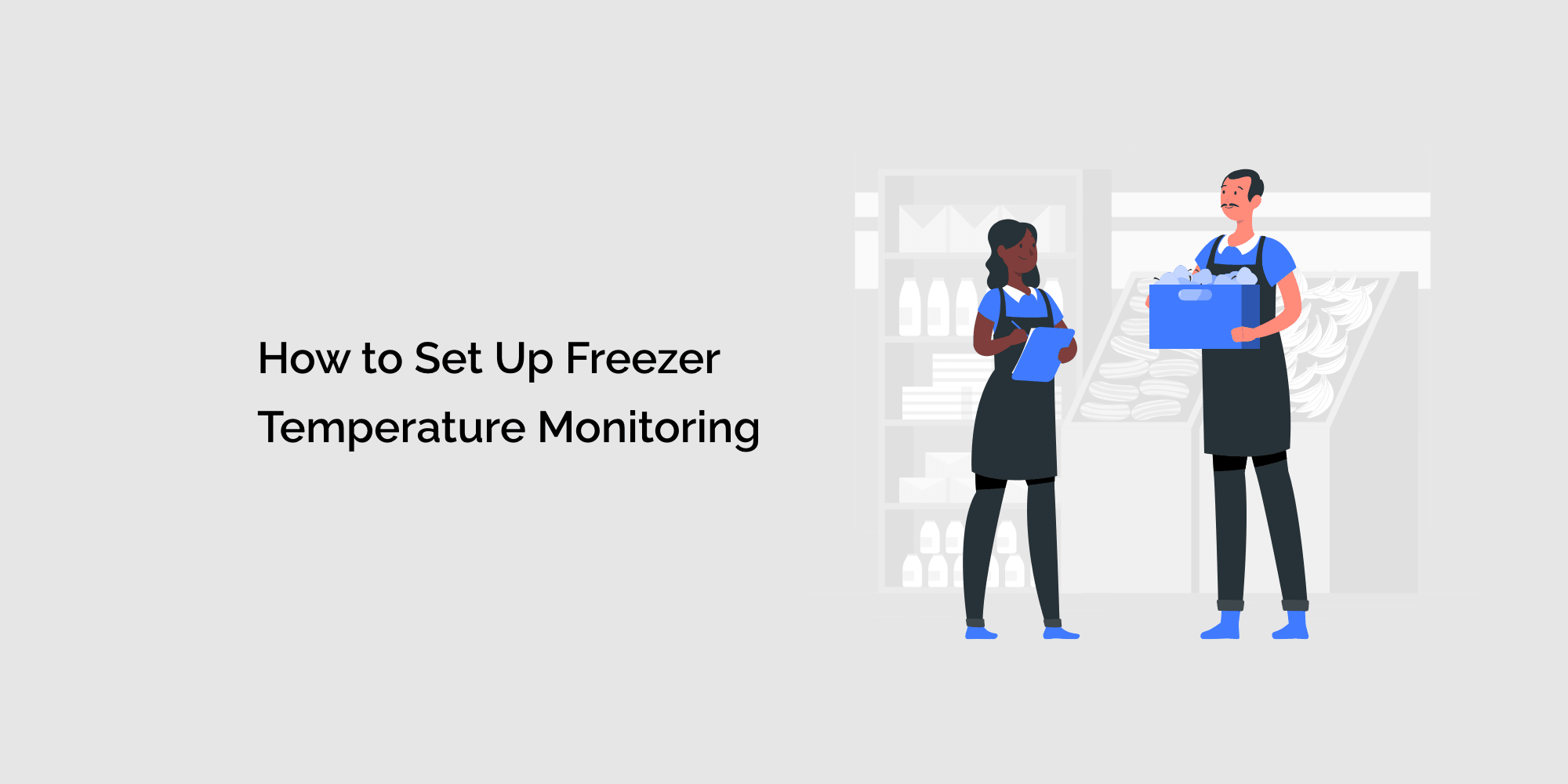A freezer is an essential appliance for preserving food, especially perishable items, for extended periods. However, maintaining the correct temperature in your freezer is crucial to ensure food safety and prevent spoilage. One effective way to monitor and control the temperature is by using a freezer thermometer and alarm system.
In this blog, we will guide you through the process of setting up a freezer temperature monitoring system to keep your food fresh and safe. We will explore the importance of maintaining the correct freezer temperature, the benefits of using a freezer thermometer, and the functionality of a freezer alarm system.
Why is Maintaining the Correct Freezer Temperature Important?
Maintaining the correct temperature in your freezer is crucial for several reasons:
a. Food Safety: Proper freezer temperature inhibits the growth of bacteria, molds, and yeasts, preventing foodborne illnesses. Cold temperatures help preserve the quality and nutritional value of frozen foods.
b. Extended Shelf Life: The correct temperature slows down enzymatic and microbial activity, allowing food to remain safe and retain its quality for longer periods.
c. Energy Efficiency: A properly set freezer temperature ensures optimal energy efficiency, reducing electricity consumption and lowering utility bills.
d. Cost Savings: By preventing food spoilage, you save money by avoiding unnecessary food waste.
Understanding Freezer Thermometers
a. Types of Freezer Thermometers: There are various types of freezer thermometers available, including analog, digital, and wireless thermometers. Each type has its advantages and features.
b. Placement and Calibration of Freezer Thermometers: Proper placement of the thermometer inside the freezer is essential for accurate temperature readings. Additionally, regular calibration ensures the thermometer remains accurate over time.
The Role of Freezer Alarm Systems
a. How Freezer Alarm Systems Work: Freezer alarm systems are designed to monitor the temperature inside the freezer continuously. They sound an audible alarm and provide visual alerts if the temperature exceeds a certain threshold.
b. Features and Benefits of Freezer Alarm Systems: Freezer alarm systems offer advanced features like temperature logging, remote monitoring, and real-time notifications. They provide peace of mind and allow quick action to prevent food spoilage in case of temperature fluctuations.
Setting Up Freezer Temperature Monitoring
Selecting a Freezer Thermometer:
Consider the different types of freezer thermometers available, their features, and your specific needs to choose the most suitable thermometer for your freezer.
Installing the Freezer Thermometer:
Follow the manufacturer's instructions to install the thermometer properly inside the freezer. Ensure it is placed in a central location for accurate readings.
Calibrating the Freezer Thermometer:
Learn how to calibrate your freezer thermometer to ensure its accuracy. Calibration ensures that the thermometer displays the correct temperature and helps you make informed decisions.
Setting Up the Freezer Alarm System:
If your freezer thermometer doesn't have an alarm function, consider installing a separate freezer alarm system. Follow the manufacturer's instructions to connect and set up the alarm system for optimal performance.
Best Practices for Freezer Temperature Monitoring
a. Regular Temperature Checks:
Establish a schedule for checking and recording freezer temperatures to detect any fluctuations or issues promptly.
b. Maintenance and Troubleshooting Tips:
Learn how to clean and maintain your freezer thermometer and alarm system regularly. Familiarize yourself with common troubleshooting techniques to address any technical problems.
c. Emergency Response Plan:
Develop a plan for responding to temperature alarms or power outages to minimize food spoilage risks.
Best Practices for Freezer Temperature Monitoring
a. Regular Temperature Checks:
Establish a schedule for checking and recording freezer temperatures to detect any fluctuations or issues promptly. Ideally, freezer temperatures should be kept between -18°C (0°F) and -23°C (-10°F) for optimal food preservation. Use your freezer thermometer to measure the temperature and record it in a logbook or a digital monitoring system. Aim to check the temperature at least once a day or more frequently if you frequently open the freezer or during hot weather.
b. Maintenance and Troubleshooting Tips:
To ensure accurate temperature readings, clean your freezer thermometer regularly following the manufacturer's instructions. Accumulated dust or debris can affect its performance. Additionally, inspect the thermometer for any signs of damage or malfunction. If you notice any issues, such as a broken display or erratic readings, consider replacing the thermometer promptly. Refer to the manufacturer's troubleshooting guide or contact customer support for assistance if you encounter any technical problems with the thermometer or alarm system.
c. Emergency Response Plan:
In the event of a temperature alarm or power outage, having a well-defined emergency response plan is crucial. Familiarize yourself with the alarm system's features, including the audible alarm and visual alerts. Ensure that the alarm is set to an appropriate threshold, typically slightly above the desired freezer temperature.
When an alarm is triggered, take immediate action to address the situation. This may involve transferring perishable items to an alternative freezer, contacting a technician for repairs, or taking steps to restore power if there is an outage. Having a plan in place will help minimize food spoilage risks and ensure quick response times.
Conclusion
By setting up a freezer temperature monitoring system, including a freezer thermometer and alarm system, you can ensure the safety and quality of your frozen food. Monitoring the temperature and responding promptly to fluctuations will help prevent foodborne illnesses, extend shelf life, and save money. Follow the steps outlined in this blog to establish an effective freezer temperature monitoring system and enjoy peace of mind knowing your frozen goods are well-protected.
Remember to maintain the correct freezer temperature, regularly check and calibrate your freezer thermometer, and set up a freezer alarm system for added security. By implementing these best practices, you can confidently store your perishable items and reduce the risk of food spoilage. Enjoy the benefits of a well-maintained freezer and savor the freshness of your frozen goods with the peace of mind that comes from knowing you have an effective temperature monitoring system in place.








